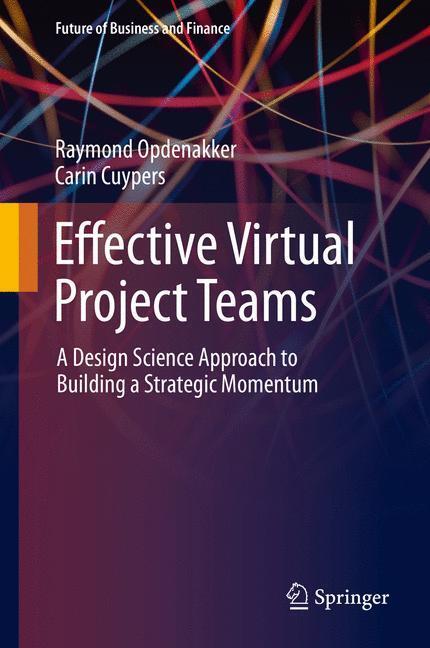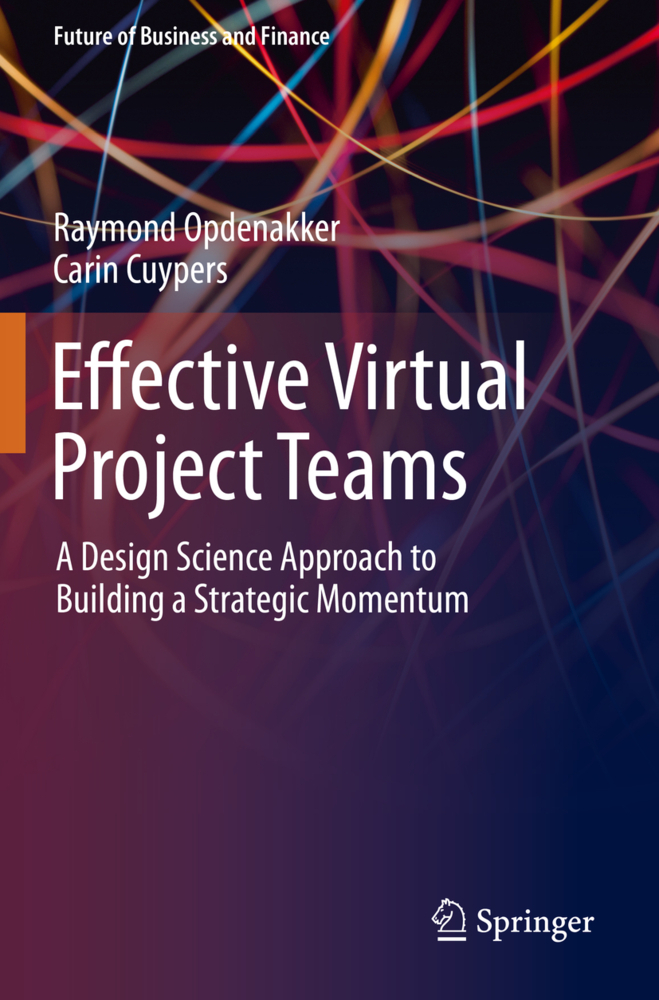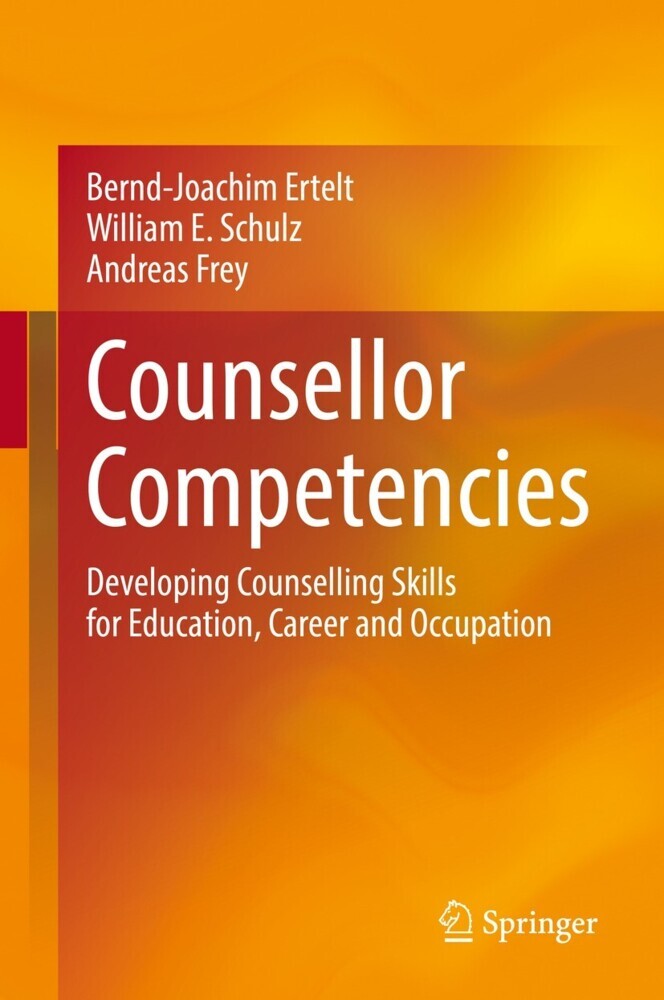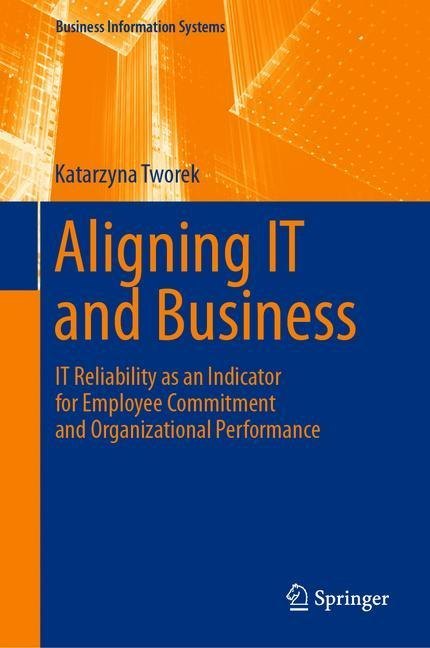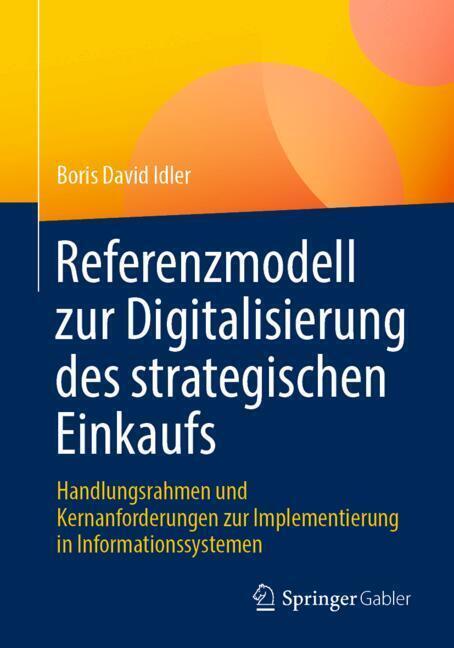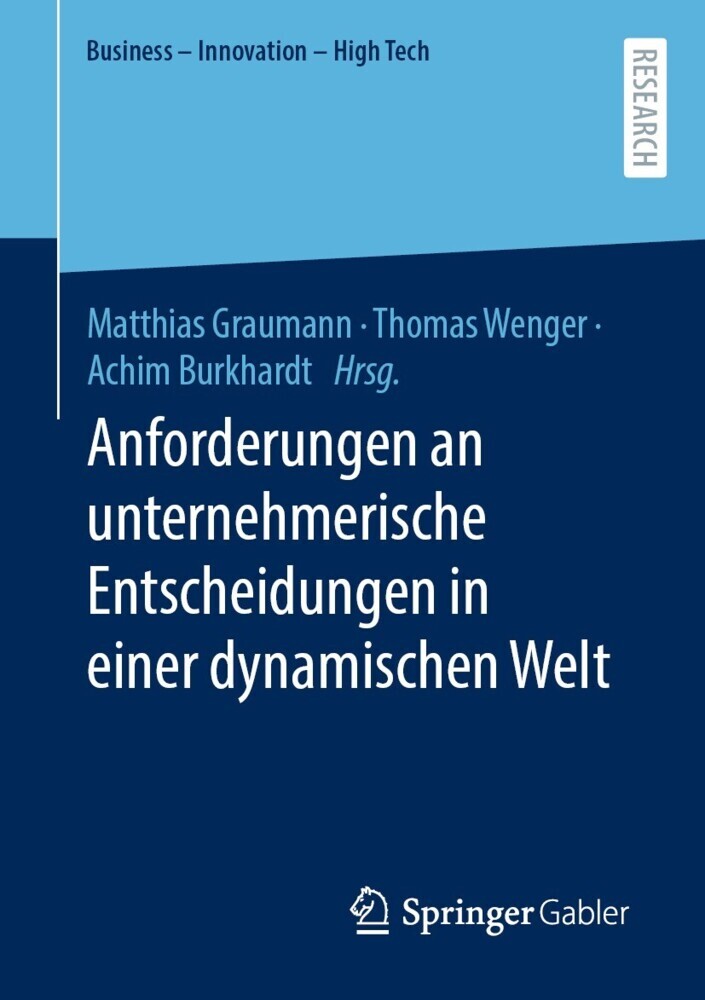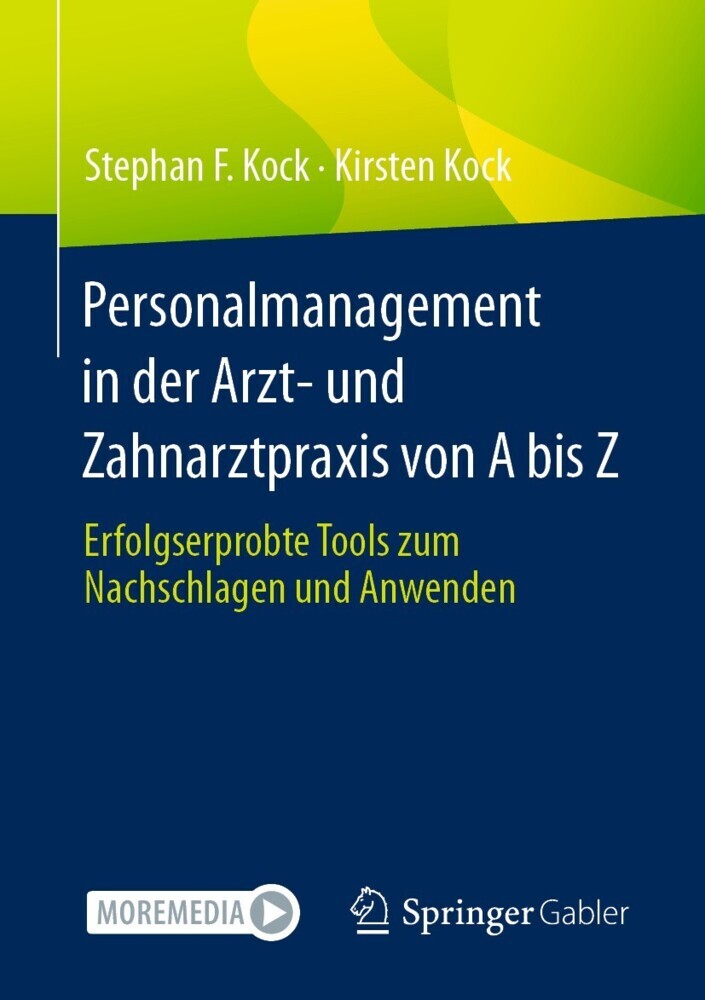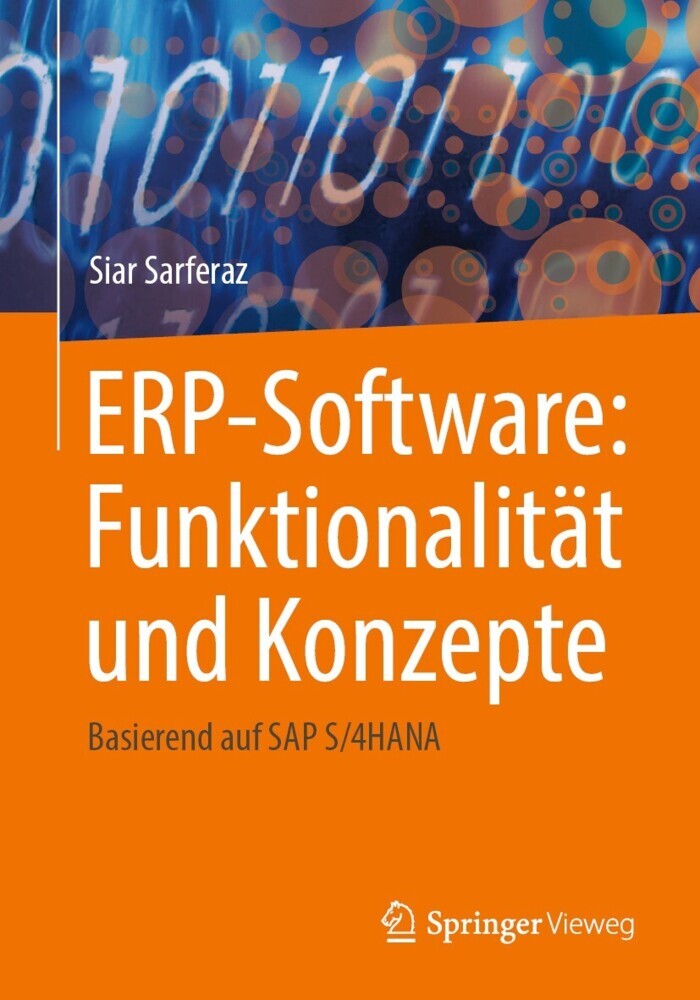Effective Virtual Project Teams
Effective Virtual Project Teams
Collaborating in virtual teams is a new reality in modern project management and work environments. Its emergence calls for an extensive analysis and re-alignment on the part of organizations, so as to help virtual teams maintain 'strategic momentum' - a concept that this book introduces. Strategic momentum represents perseverance with regard to pursuing a virtual team's strategy; a 'flywheel' concept that drives the team members to concentrate on the project tasks until they have reached their shared goal.
The authors present a design science based model, together with an in-depth qualitative study involving eight virtual R&D project teams. In this model, strategic momentum is assessed in terms of empowerment, team task insight, and collective commitment. These three determinants can be promoted and sustained by various contextual factors and interventions on the part of the management. The authors also provide a wealth of practical tips to help practitioners and consultants generate and sustain strategic momentum in their own contexts when working with virtual teams.
Dr. Raymond Opdenakker and Carin Cuypers MSc MSc CMC, run their teaching and consultancy practice, Bureau Lara, in The Netherlands.
Raymond Opdenakker is academically affiliated with the Open University of The Netherlands, Eindhoven University of Technology (EIT), and the Master School of EIT Digital. He has authored, most often with Carin Cuypers, up to 80 articles and ten books on diverse business issues.
Carin Cuypers studied Law and Governance (business and public). She is also affiliated to the Open University of the Netherlands. She has authored up to 60 articles and eight books on diverse business issues.
1;Foreword;7 2;Contents;8 3;About the Authors;12 4;1: Introduction and Field Problem Concerning Virtual Project Teams;13 4.1;1.1 Introduction;13 4.2;1.2 Design Science;14 4.3;1.3 Design Science Research;15 4.3.1;1.3.1 Design Propositions;16 4.4;1.4 Design Science Research Cycle;17 4.5;1.5 Field Problems in the Domain of Virtual Project Teams;19 4.5.1;1.5.1 Choice of the Field Problem;19 4.5.1.1;1.5.1.1 Domain of the Field Problem;19 4.5.1.2;1.5.1.2 Field Problem in Virtual Project Teams;22 4.6;References;25 5;2: Strategic Momentum;28 5.1;2.1 Introduction;28 5.2;2.2 Strategic Momentum;30 5.2.1;2.2.1 History of the Concept of Momentum;30 5.2.2;2.2.2 The Origins of the Concept of Momentum;32 5.2.3;2.2.3 Strategic Momentum in the Academic Management Literature;33 5.2.4;2.2.4 Strategic Momentum in Virtual Project Teams;36 5.2.5;2.2.5 Measuring Strategic Momentum;36 5.2.6;2.2.6 A Special Case of Momentum: Team Flow;38 5.3;2.3 Solution Concept;41 5.4;2.4 Research Questions;45 5.5;References;46 6;3: Virtual Project Teams and Their Effectiveness;49 6.1;3.1 Introduction;49 6.2;3.2 Team Definitions;49 6.3;3.3 What Is the Effectiveness of Virtual Teams?;50 6.4;3.4 Critical Success Factors for a Virtual Team;51 6.4.1;3.4.1 Team Inputs;51 6.4.1.1;3.4.1.1 Face-to-Face Kick-Off Meeting;52 6.4.1.2;3.4.1.2 Team Composition;52 6.4.1.3;3.4.1.3 Project Description;53 6.4.1.4;3.4.1.4 Task Characteristics;53 6.4.1.5;3.4.1.5 Partner Selection;54 6.4.2;3.4.2 Team Processes;55 6.4.2.1;3.4.2.1 (FTF) Meetings;55 6.4.2.2;3.4.2.2 (Technical) Knowledge Sharing;56 6.4.2.3;3.4.2.3 Training;57 6.4.2.4;3.4.2.4 Decision-Making;57 6.4.2.5;3.4.2.5 Feedback;58 6.4.2.6;3.4.2.6 Media Types (Use of Different Types);58 6.4.2.6.1;Computer-Mediated Communication (Electronically Mediated Communication);58 6.4.2.6.2;Intercultural Communication;59 6.4.2.7;3.4.2.7 Management Style;60 6.4.2.7.1;Leadership;60 6.4.2.8;3.4.2.8 Task Reallocation;61 6.4.2.9;3.4.2.9 Team Cohesiveness;61 6.4.2.10;3.4.2.10 Trust;62 6.4.2.10.1;Importance of Trust in Virtual Teams;62 6.4.2.10.2;Types of Trust in Virtual Teams;62 6.4.2.11;3.4.2.11 Life Cycle;63 6.4.3;3.4.3 Team Outcomes;65 6.5;3.5 Conclusions;65 6.6;References;65 7;4: Searching for Momentum in Virtual Project Teams;69 7.1;4.1 Introduction;69 7.2;4.2 Dewey Case;70 7.2.1;4.2.1 Project Structure;70 7.2.1.1;4.2.1.1 Project Management (see Fig. 4.1);70 7.2.2;4.2.2 Within-Case Analysis: The Emergence and Sustaining of Strategic Momentum;72 7.2.2.1;4.2.2.1 Emergence of Strategic Momentum;72 7.2.2.2;4.2.2.2 Sustaining of Strategic Momentum;74 7.2.2.3;4.2.2.3 Momentum Effects;79 7.2.3;4.2.3 Commentary;80 7.3;4.3 GOA Case;81 7.3.1;4.3.1 Project Structure;81 7.3.2;4.3.2 Within-Case Analysis: The Emergence and Sustaining of Strategic Momentum;82 7.3.2.1;4.3.2.1 Emergence of Strategic Momentum;82 7.3.2.2;4.3.2.2 Sustaining of Strategic Momentum;84 7.3.2.3;4.3.2.3 Momentum Effects;90 7.3.3;4.3.3 Commentary;90 7.4;4.4 PRINT Case;91 7.4.1;4.4.1 Project Structure;91 7.4.2;4.4.2 Within-Case Analysis: The Emergence and Sustaining of Strategic Momentum;92 7.4.2.1;4.4.2.1 Emergence of Strategic Momentum;92 7.4.2.2;4.4.2.2 Sustaining of Strategic Momentum;94 7.4.2.3;4.4.2.3 Momentum Effects;99 7.4.3;4.4.3 Commentary;100 7.5;4.5 Berlin Case;101 7.5.1;4.5.1 Project Structure;101 7.5.2;4.5.2 Within-Case Analysis: The Emergence and Sustaining of Strategic Momentum;104 7.5.2.1;4.5.2.1 Emergence of Strategic Momentum;104 7.5.2.2;4.5.2.2 Sustaining of Strategic Momentum;107 7.5.2.3;4.5.2.3 Momentum Effects;112 7.5.3;4.5.3 Commentary;113 7.6;4.6 Paris Case;114 7.6.1;4.6.1 Project Structure;114 7.6.2;4.6.2 Within-Case Analysis: The Emergence and Sustaining of Strategic Momentum;116 7.6.2.1;4.6.2.1 Emergence of Strategic Momentum;116 7.6.2.2;4.6.2.2 Sustaining of Strategic Momentum;118 7.6.2.3;4.6.2.3 Momentum Effects;125 7.6.3;4.6.3 Commentary;125 7.7;4.7 Lisbon Case;126 7.7.1;4.7.1 Project Structure;126 7.7.2;4.7.2 Within-Case Analysis: The Emergence and Sustaining
Opdenakker, Raymond
Cuypers, Carin
| ISBN | 9783030222284 |
|---|---|
| Artikelnummer | 9783030222284 |
| Medientyp | E-Book - PDF |
| Copyrightjahr | 2019 |
| Verlag | Springer-Verlag |
| Umfang | 244 Seiten |
| Sprache | Englisch |
| Kopierschutz | Digitales Wasserzeichen |

